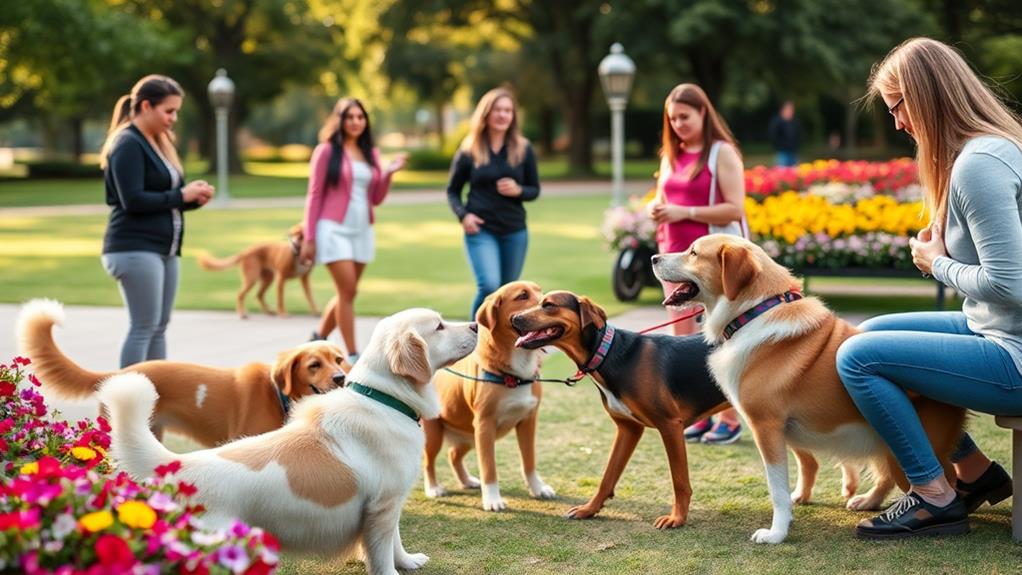To tackle behavioral issues in dog training, start by recognizing the root causes, like fear or anxiety. Use positive reinforcement techniques, rewarding good behavior with treats or praise. Consistency is imperative; guarantee everyone in the household uses the same commands and routines. Provide ample socialization opportunities by visiting dog parks or attending training classes. Address any anxiety by identifying triggers and creating a safe space for your dog. If problems persist, consider seeking help from certified trainers or veterinary behaviorists. With these strategies, you'll build a stronger bond with your dog and improve their behavior. There's so much more to explore!
Understanding Behavioral Challenges
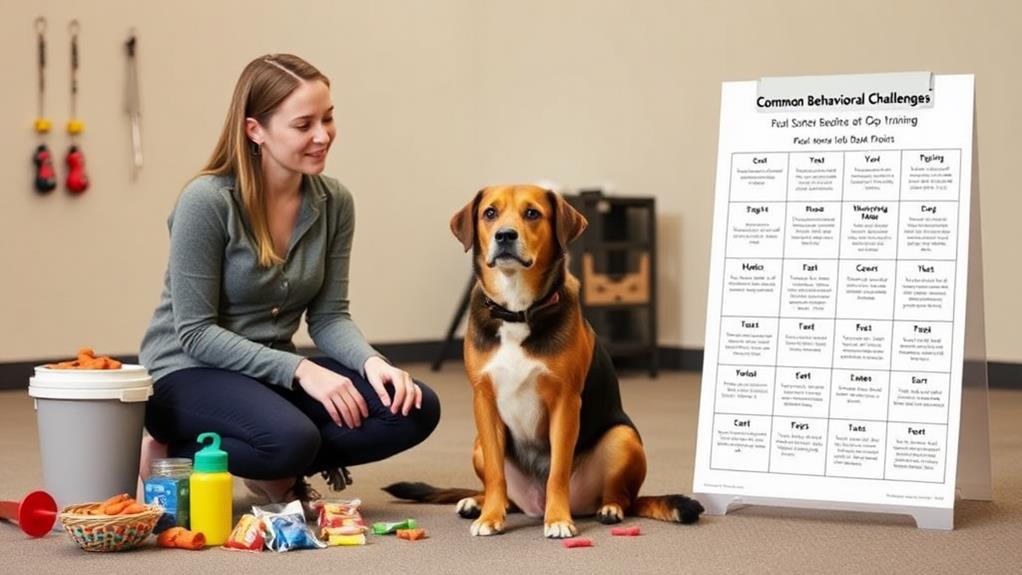
When it comes to dog training, understanding behavioral challenges is vital for success. You'll encounter a variety of issues, from excessive barking to aggression, and recognizing the root causes can make a big difference. Dogs often display behaviors due to fear, anxiety, or a lack of socialization. It's pivotal to observe your dog closely and identify specific triggers that lead to these challenges.
For instance, if your dog barks excessively when strangers approach, it might stem from fear or protective instincts. Understanding this can help you address the underlying issue rather than simply trying to silence the barking. You should also consider your dog's environment; a chaotic home or lack of routine can exacerbate behavioral problems.
Moreover, each breed may have unique tendencies, so familiarizing yourself with your dog's characteristics can aid in understanding their behavior. When you take the time to analyze these factors, you empower yourself to create a more effective training plan. By addressing the behavioral challenges directly, you can foster a stronger bond with your dog and set the stage for successful training outcomes.
Positive Reinforcement Techniques
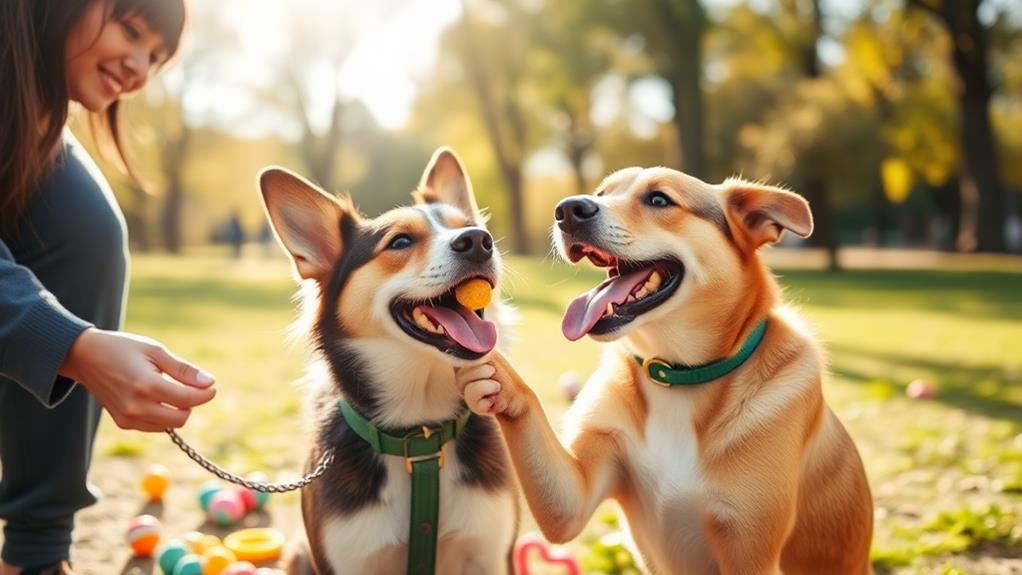
Five key positive reinforcement techniques can transform your dog training experience and strengthen your bond with your furry friend. By focusing on rewarding desirable behaviors rather than punishing unwanted ones, you create a more enjoyable environment for both you and your dog.
Here are three effective techniques to implement:
- Treats: Use small, tasty treats that your dog loves. Offering a reward immediately after your dog performs the desired action reinforces the behavior.
- Praise: Verbal praise, such as saying "Good boy!" or "Well done!" accompanied by an enthusiastic tone, can motivate your dog to repeat the behavior.
- Playtime: Incorporate play as a reward. If your dog sits on command, engage them in a fun game with their favorite toy as a reward.
Consistency in Training
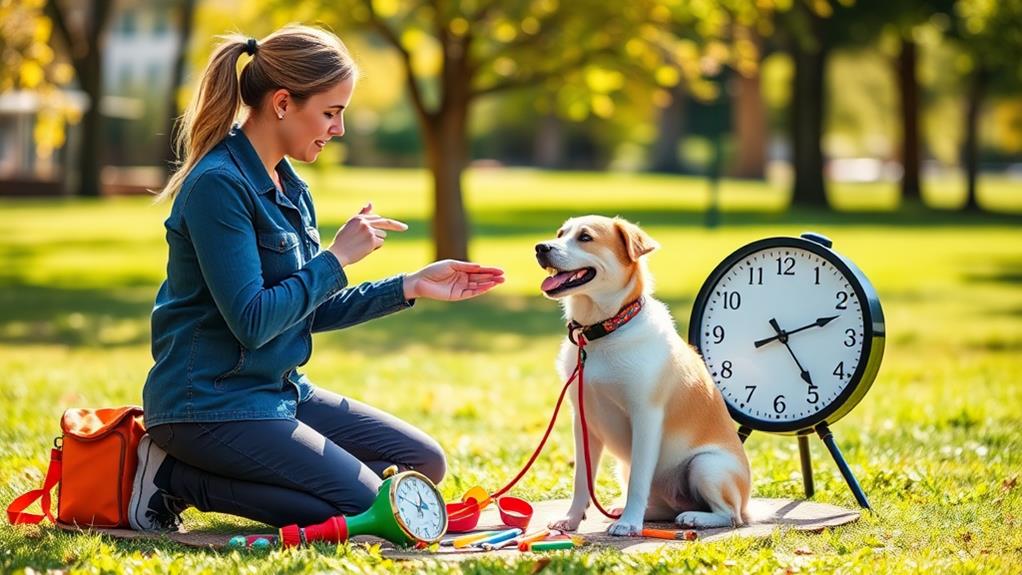
To achieve effective dog training, consistency is essential; without it, your dog can become confused about what behaviors are expected. When you set clear rules and stick to them, your dog learns quickly what's acceptable and what isn't. If you allow certain behaviors sometimes but not others, you're sending mixed signals that can lead to frustration for both of you.
Establishing a routine is key. Use the same commands, gestures, and rewards every time you train. For instance, if you say "sit," always use that exact word instead of switching to "down" or "stay." This clarity helps reinforce the behavior you want to see.
Training sessions should also be regular and predictable. Short, frequent sessions, rather than long, irregular ones, help maintain your dog's focus and enthusiasm. Remember to be patient; learning takes time, and consistency will pay off in the long run.
Lastly, everyone in your household should follow the same training guidelines. If one person allows a behavior that another doesn't, your dog may become confused. Stick together as a team, and you'll set your dog up for success.
Socialization Opportunities
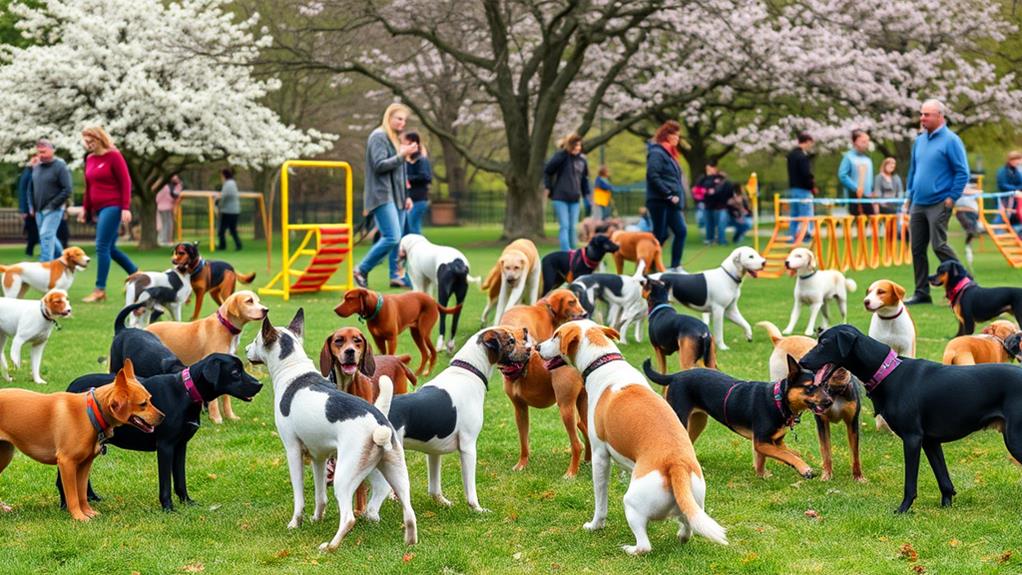
Socialization opportunities play a pivotal role in your dog's development, helping them learn how to interact appropriately with other dogs and people. By exposing your dog to various environments, sounds, and experiences, you promote confidence and reduce the likelihood of behavioral issues down the line.
Puppy Classes: Enroll your dog in a local puppy training class where they can meet other dogs and learn basic commands in a controlled environment.
Dog Parks: Visit dog parks to allow your dog to engage with different breeds and sizes, teaching them important social cues and boundaries.
Community Events: Participate in community events or dog-friendly meetups to expose your dog to new people and environments, reinforcing positive interactions.
Addressing Anxiety and Fear

Anxiety and fear can markedly impact your dog's behavior, making it essential to address these issues early on. Start by identifying the specific triggers that cause anxiety, whether it's loud noises, unfamiliar people, or being left alone.
Once you know the triggers, you can work on desensitizing your dog. Gradually expose your dog to these situations in a controlled manner, allowing them to adjust without feeling overwhelmed.
Positive reinforcement plays a pivotal role in this process. Reward your dog with treats and praise when they remain calm in anxiety-inducing situations. This helps them associate these triggers with positive experiences rather than fear. Additionally, creating a safe space in your home can provide your dog with a retreat when they feel anxious.
Routine is also important; maintaining a consistent schedule for feeding, walks, and playtime can help your dog feel more secure. Ultimately, don't underestimate the power of exercise. Regular physical activity can substantially reduce anxiety levels and promote overall well-being. By actively working on these strategies, you'll help your dog manage their anxiety and fear more effectively.
Professional Help and Resources
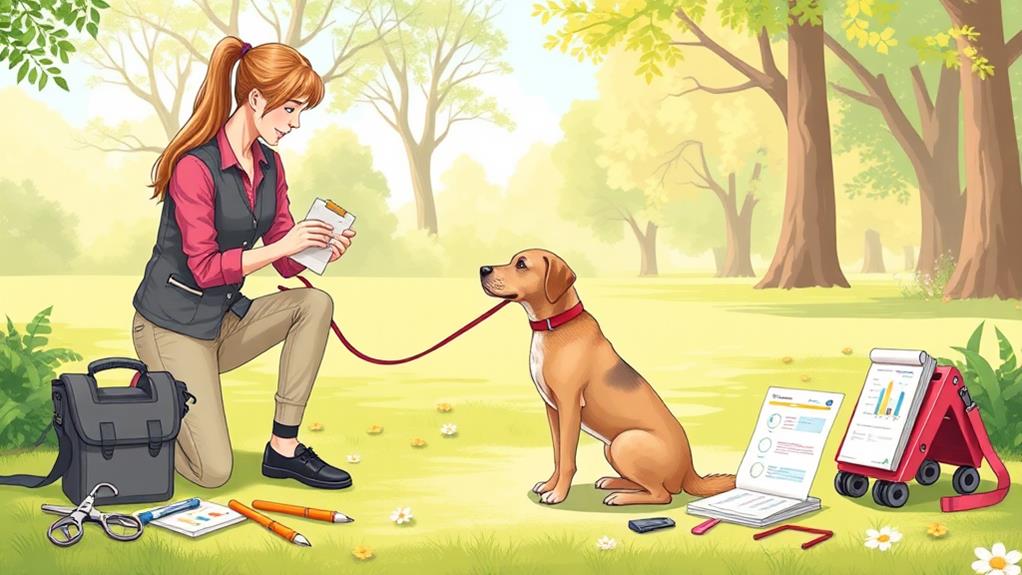
Many dog owners find that seeking professional help can be essential in overcoming behavioral issues. If you're struggling with your dog's behavior, don't hesitate to reach out to experts who can offer tailored guidance.
Professional trainers and behaviorists have the skills and experience to identify underlying problems and develop effective strategies.
When looking for resources, consider the following options:
- Certified Trainers: They're trained in various methods and can provide hands-on assistance tailored to your dog's specific needs.
- Veterinary Behaviorists: If your dog's issues stem from medical problems, these specialists can diagnose and treat underlying health concerns that may be influencing behavior.
- Online Resources: Reputable websites and online courses can offer valuable information and training techniques, allowing you to learn at your own pace.
Don't underestimate the importance of involving professionals in your dog training journey. Their expertise can make a significant difference, helping you and your dog build a stronger bond and achieve lasting behavioral improvements. Remember, it's okay to ask for help; you're not alone in this process.
Frequently Asked Questions
How Do Breed Traits Influence Behavioral Issues in Dogs?
Breed traits markedly influence a dog's behavior. You'll notice certain breeds may exhibit specific tendencies, like herding or guarding. Understanding these traits helps you anticipate and address potential behavioral issues more effectively in your training approach.
Can Diet Affect My Dog's Behavior During Training?
Absolutely, your dog's diet can substantially influence their behavior during training. Nutritious food boosts energy levels and focus, while poor nutrition might lead to distractions or hyperactivity. Make sure you're feeding them a balanced diet to enhance training outcomes.
What Role Does Exercise Play in Managing Behavioral Problems?
Exercise dramatically reduces your dog's energy levels, helping to prevent behavioral problems. Regular walks or playtime keep them mentally stimulated and physically fit, making your training sessions more effective and enjoyable for both of you.
How Can I Identify Triggers for My Dog's Behavioral Issues?
Noticing your dog's calm moments versus anxious ones helps identify triggers. Observe their reactions to different environments, sounds, or people. Keep a journal to track patterns, and you'll better understand what sets them off.
Is There a Specific Age to Start Addressing Behavioral Problems?
You can start addressing behavioral problems as early as puppyhood. Early intervention helps shape positive behaviors, but it's never too late. Consistency, patience, and positive reinforcement will aid in correcting issues at any age.
Conclusion
By embracing these strategies, you can transform your dog's behavior, much like a sculptor chisels away at a block of marble to reveal a masterpiece. Remember, patience and persistence are your most trusted allies on this journey. Whether you're using positive reinforcement, ensuring consistency, or providing socialization opportunities, you're laying the groundwork for a well-adjusted companion. So, don't hesitate to seek professional help if needed—every great adventure begins with a little guidance!

